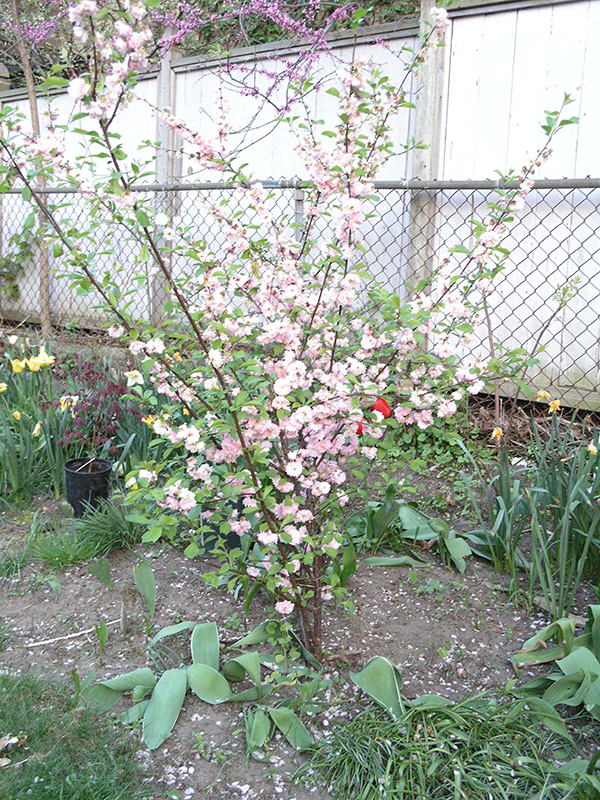
Woody > Prunus > Prunus triloba > Prunus triloba
Prunus triloba
Flowering Almond, Double Flowering Plum
Origin: China.
Mike's
Opinion


"
The Flowering Almond is impressive when in flower, but otherwise has a rather awkward almost scrubby appearance. It can be pruned and trained to fit various functions in the landscape and but its maintenance is otherwise low; a back of the border type plant. It is very hardy, rarely affected by pests or diseases, and tolerant of an urban environment which makes it a worthwhile consideration for the landscape. Birds, butterflies and small animals are attracted to the pink pompom-like flowers and add value to its use in the garden.
Michael Pascoe, NDP., ODH., CLT., MSc. (Plant Conservation)
"
| Family |
| Rosaceae |
| Genus |
| Prunus |
| Species |
| triloba |
| Category |
| Woody |
| Type |
| Shrub (deciduous) |
| USDA Hardiness Zone |
| 3 - 7 |
| Canadian Hardiness Zone |
| 1a - 7a |
| RHS Hardiness Zone |
| H7 - H5 |
| Temperature (°C) |
| (-37) - (-12) |
| Temperature (°F) |
| (-35) - 10 |
| Height |
| 3-5 m |
| Spread |
| 3-5 m |
Photographs
Description and Growing Information
Flowering Period
| Landscape |
| Flowering shrub or small tree. |
| Cultivation |
| Moist, well drained loams in full sun to partial shade. |
| Growth |
| Medium |
| Pests |
| Plum Pox: Symptoms may be confused with other diseases/disorders such as nutrient deficiencies or pesticide injuries. PPV symptoms can occur on leaves, flowers and/or fruit. Faint yellow rings or lines may be found on the leaves. PPV generally does not cause plant mortality however, can reduce the plant productivity and longevity. How to Reduce the Spread and Impact of PPV: 1. Propagate vulnerable Prunus trees and shrubs outside of the affected area a. Isolation is important to protect clean plants from future spread of the disease. b. Propagating and growing vulnerable plants away from the virus-infected area reduce the likelihood of the disease spreading any further. This should be as far away from the quarantined area and any potential sources of the virus. 2. Propagate Prunus plants with virus-free Budwood and Rootstock from virus tested mother trees a. This eliminates the propagation link for viral diseases. 3. Inspect vulnerable Prunus for symptoms a. All Prunus shrubs and trees should be visually inspected for symptoms at lease twice per year and conducted by trained personnel familiar with the virus. b. Any plants found to be infected should not be moved or sold and must be reported to the Canadian Food Inspection Agency immediately. c. Inspections should not be conducted in periods of hot weather (temperatures over 30˚C). 4. Manage aphid vectors a. Aphids are extremely attracted to suckers (vegetative shoots at the base of the tree), these should be removed to avoid aphid colonization, feeding or migration. 5. Plant tolerant and resistant varieties a. When available, grow plum pox tolerant or resistant Prunus varieties. |
| Leaf Description |
| Green leaves, double-toothed, broad-ovate and coarse. |
| Flower Description |
| Pretty 5 petaled pink flowers. |
| Fruit Description |
| Globose red fruit appears after flowering has occurred. |
